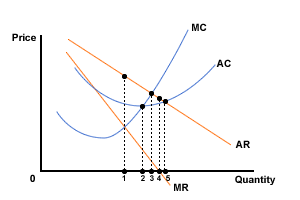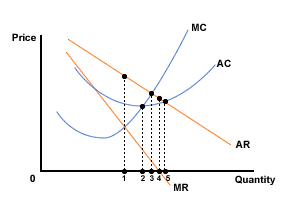The model of monopoly - self-test questions

1 |
2 |
MonopolyWhich of the following are true in monopoly? (Select all responses that are correct) |
3 |
Output levels - Monopoly
At which output level in the diagram below will the monopolist produce to maximise profits?
|
4 |
Output levels - Monopoly
At which output level in the diagram below will the monopolist produce to maximise revenue?
|


